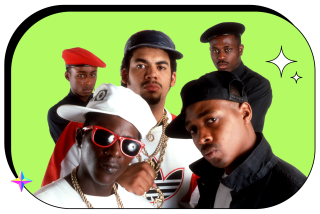We Killed Music, Now We Take the Rap
Many people will argue that the phrase “rap music” is an oxymoron. But what do those people find unsatisfactory or irritating about it? Rap has no melody, so what’s to sing?
What’s more, rap has no harmony, and in music, harmony is usually melody’s servant. So rap leaves out completely two out of the three ingredients we enjoy so much in songs.
The third ingredient in the music mix is rhythm. At first, rap didn’t provide its own rhythm; instead, it used prerecorded tracks. Its lyrics, however, provide a rhythm of their own, which at times is not unattractive, but because the lyrics are spoken or shouted at us, rather than sung to us, we are not drawn to them.
So there we are, with music that has no melody, no harmony and no rhythms of its own. Using these as criteria, maybe many people are right. Maybe “rap music” is indeed an oxymoron. Yet interestingly, the people who despise it most are those who might well be responsible for its creation and its place in our culture. Here’s why and how that might be so.
In the late 1970s, the results of Howard Jarvis’ tax revolt showed up in our public school systems. Polls were taken to get citizens’ comments and advice about how to use the now-fewer tax dollars for our schools. After the poll results were published, music classes were cut from top to bottom, from kindergarten through high school.
The absence of music devastated our children’s musical education. They’ve had no chance to learn to sing. They know nothing about melody or harmony and no longer have musical instrument instruction available, except privately, which is to say when the parents can afford it. Naturally, poorer neighborhoods felt the lack of music first. Inner-city schools, predominantly black neighborhood schools, were hit first. Therefore, whatever was going to substitute for music would start there.
There is no way you can take music away from kids! When they are teenagers, they will have music. Unable to play instruments and not taught to sing, they used prerecorded rhythm tracks to start to mouth their angry lyrics at us.
We invested heavily in having no music in our school systems and our investment in having no music paid off. We got what we paid for--no music. The fruit of that investment is now harshly lecturing us from the bandstand, without melody and without harmony.
If we want to reverse the trend, if we want to hear music from our future generations, then we need to put our money where their mouths are--show our students how to sing with a vengeance, if they must, but sing with melody and play and sing with harmony, the kind that they can learn in schools that have solid music programs.
The American way of investment does indeed work. Rap music proved it.
More to Read
The biggest entertainment stories
Get our big stories about Hollywood, film, television, music, arts, culture and more right in your inbox as soon as they publish.
You may occasionally receive promotional content from the Los Angeles Times.









